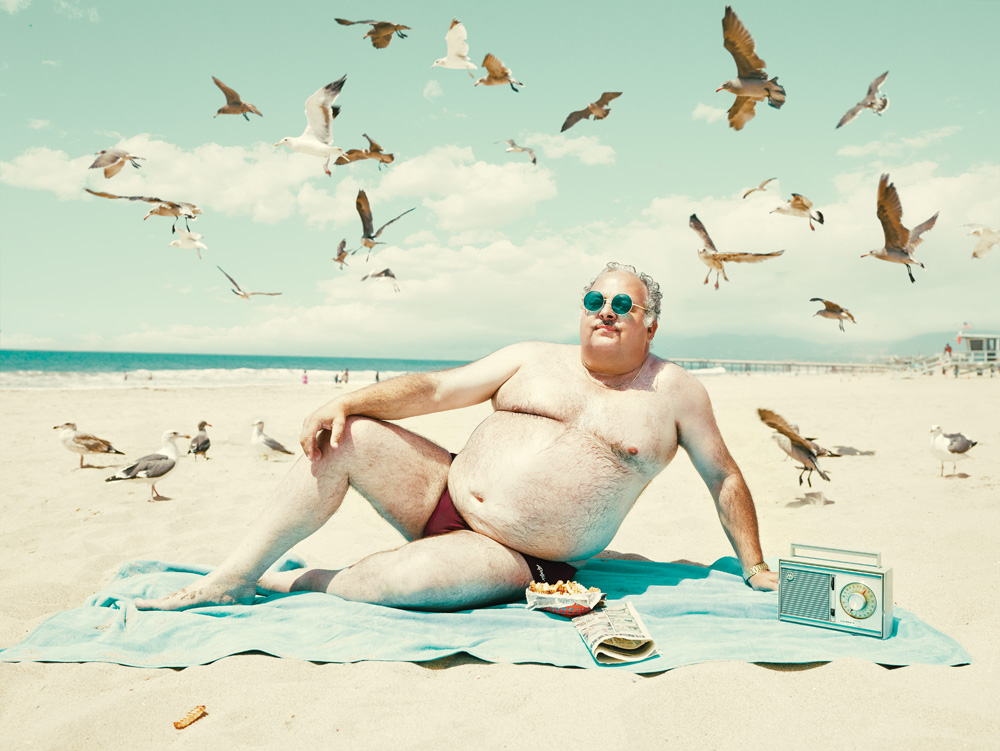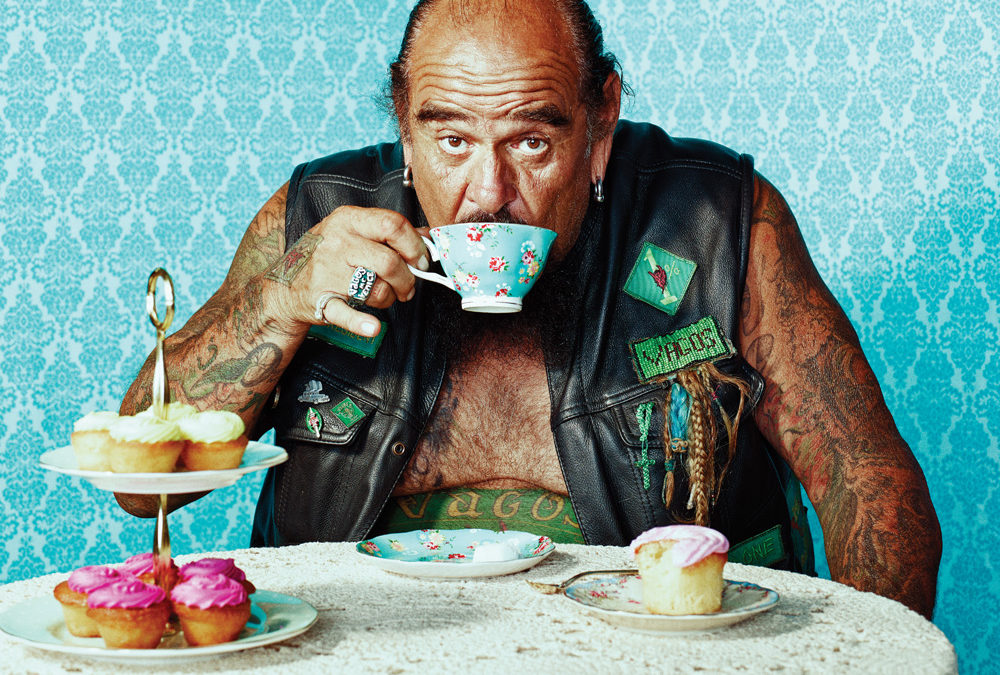Born in South Africa, Dean Bradshaw grew up in Australia where he spent much of HIS childhood catching lizards and other reptiles. Having obtained a degree in zoology, he worked as a field biologist before moving to California to become a full-time photographer known for his skills in lighting and Photoshop. While Dean does a lot of commercial work, all images shown here belong to his growing personal body of work.
You love reptiles so much, that you even studied them in university. What is so fascinating about these creatures?
I’m not sure exactly where my fascination with wildlife and reptiles and amphibians in particular came from. I’d spend hours catching them and keeping them in all sorts of containers when I was really young and then in high school that turned into far away field trips with my father to find the rarer and more interesting species all across the Australian outback. The natural progression for me was a degree in Zoology, from where I was able to move into a job as a field biologist – turning my childhood interest into a career. Throughout this time I was an avid painter and spent much of my life at school in art classes, learning about painting and drawing which then led to an interest in photography.
I’m not much of a Freud man, but would he have anything to say about that?
Ha, I’m not sure!
You have come a long way from shooting animals in the Australian desert to being a photographer in LA. Do you miss the desert?
It was a big jump when I look at it in retrospect. But at the time the change was gradual – aside from my move to the U.S. of course. I still miss the Australian desert, but thankfully California has one of the closest desert ecosystems to the one I grew up exploring: places like Joshua Tree, Palm Springs, Death Valley and the like. I’m trying to get out there at least once a month, adventuring in interesting locations and riding my dirt bike. The animal life isn’t as diverse, but the landscape is quite similar.
“I don’t think I’d be here, if it wasn’t for the Internet,” you said in an interview with The Great Discontent. Why so?
The internet has meant that thousands of people have seen my work, who likely wouldn’t have if the web didn’t exist. Where before a photographer had to work for years before he could produce a book or gallery show a few thousand people perhaps might witness, now our work can spread to millions with a single upload. I think my success in the commercial photography space has been accelerated by my work spreading itself online. As photographers, we’re very fortunate to have such a platform.
As a self-taught photographer, among other things you studied the work of photographers you admired. Are there any names in particular that come to mind?
I have always greatly admired the work of Gregory Crewdson and many of the classic fine art color photographers, including Stephen Shore and Richard Misrach. I enjoy the incredible amount of detail and lighting that Crewdson has in his images. He would probably be at the top of my list. Shore and Misrach have a wonderful color palette that I’ve more recently come to admire. I also enjoy the work of Herb Ritts, Irving Penn, Sebastio Salgado, Nick Brandt and Richard Avedon when it comes to black and white imagery and drama. As far as modern photographers, I greatly admire Annie Leibovitz’s work for her use of color. Today, I find directors and cinematographers to be some of the more inspirational image makers out there. David Fincher, Christopher Nolan, Emmanuel Lubezki and Roger Deakins are some of the names that spring to mind.

You have a reputation for being a light and Photoshop wizard. Take, for example, the dramatic and futuristic settings in “The Athletes” series. Could you explain how it came to life?
In my more hyper-realistic work, like the one you refer to, I do a lot of compositing. We do photo shoots where I spend a lot of time lighting the subjects in a very technical way and then I bring those images into Photoshop to ‘build’ out the image, as well as enhance color and contrast. It’s a very similar process to what might happen on the film set of The Avengers or another of the Marvel movies. The actors are shot on a green screen and the background added separately. For that series, many of the images are composed of anywhere from two to twenty individual images. I spend days on Photoshop on a series like that, refining and enhancing.
While I admire your technical abilities, I also love the irony in such images as the bikers with cupcakes, the fat man on the beach or the trendy old men playing ball: funny, surreal, yet always with a certain dignity. Are these commercial or more personal works?
These were all personal work images. I grew tired of the seriousness I was treating some of my grittier subjects with, so for a change I turned that idea on its head. I enjoy the contrast and showing a subject in an unexpected way.
One of your series is called “Real Life Superheroes”. Are these people for real?
Yes, they are a fascinating subculture of people who have created super hero alter egos for themselves. They live all over the United States and range from those who dress up for fun to others who take their role as a neighborhood vigilante very seriously – to the point of getting in trouble with real criminals and the law. There is a fascinating HBO documentary about them. I discovered the group a few years ago and managed to set up a photo shoot capturing them at one of their charity events to feed the homeless community in San Diego.
Do you still do travel photography? And, if so, do you also rework those images?
I still do travel photography, but generally I have a subject or story in mind that I’d like to explore rather than simply shoot ‘from the hip’ and serendipitously as I did in the beginning. For example we just got back from Mongolia where I was photographing the Nadaam festival, which is like their Olympics (Wrestling, Bow and Horse Racing) and also the Eagle Hunters who live in the remote west of the country. I treat these images more cinematically, similarly to the way feature films are graded – to create mood and enhance atmosphere by enhancing color and contrast. I don’t composite these images.
Spending a lot of time in the studio with props and people doing everything from styling to lighting, you are like a director on aset. As you live next to Hollywood, is that the next step for Dean Bradshaw?
I am doing more and more directing on most of the campaigns I work on, incorporating live action and motion picture. I direct campaigns where we shoot stills and motion, and making my images move is a really exciting development. A motion picture is far more work than still photography, but I’ve been able to take things from both fields to develop an approach that works for me. As far as feature films go, at this point that’s not something I’m interested in, but who knows – as I do more and more motion picture work, that may change. For now I enjoy the art of the commercial – telling a story in 30 to 90 seconds.
It’s not easy these days to make a living as an image maker. The combination of big agencies and shrinking media budgets discourages many young photographers. What is your advice to a young enthusiast with ambition?
I would tell them to find a niche. It’s like any other business. If you become the go-to person in a certain field, or style or platform, you will be successful. Become the best at the style of photography that you create – or at least the most unique – and always continue pushing the envelope and creating work. If you put good work out into the world, consistently (and that’s the important part), then the rest will fall into place.
Finally, you once visited the Komodo Islands. That must have been a dream come true for a reptile lover like you. I hope you did not get bitten by the mighty dragon?
Yes it was, although that was a while ago now. It seems like a distant memory. I’ll have to return one day in the future, those lizards are enormous and equally intimidating. That part of Indonesia is a beautiful corner of the planet – a land before time.
PLASTIK MAGAZINE
JANUARY 2018
